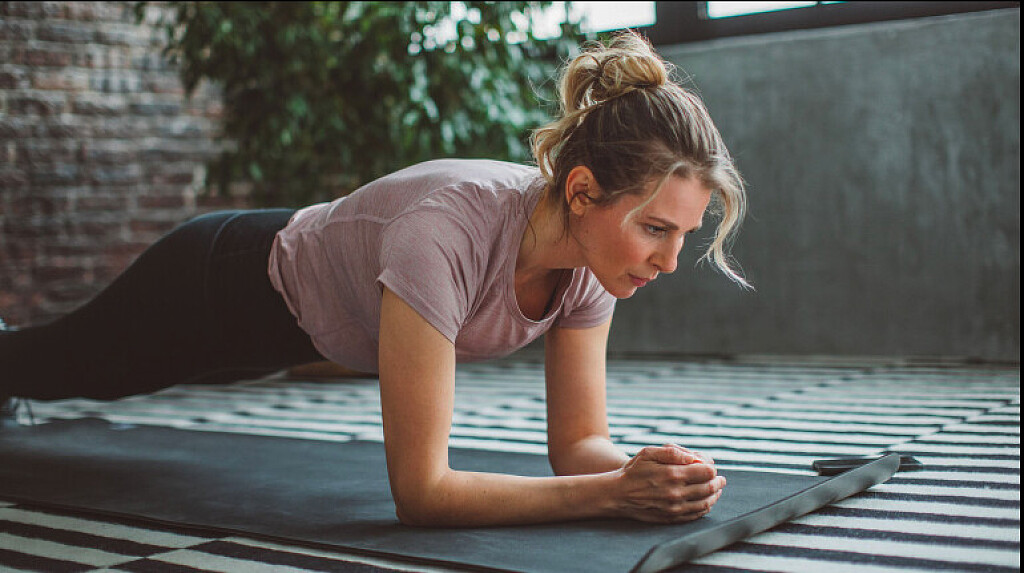Running News Daily
Running News Daily is edited by Bob Anderson. Send your news items to bob@mybestruns.com Advertising opportunities available. Train the Kenyan Way at KATA Kenya and Portugal owned and operated by Bob Anderson. Be sure to catch our movie A Long Run the movie KATA Running Camps and KATA Potato Farms - 31 now open in Kenya! https://kata.ke/
Index to Daily Posts · Sign Up For Updates · Run The World Feed
I Completely Swear by This 3-Move Core-Strengthening Sequence
It's simple—but so challenging
You head to your favorite yoga teachers’ classes for a reason. There’s something that keeps you going back again and again, whether it’s their cues, sequences, or ability to make you laugh during even the hardest poses.


When I head to Alyssa Case’s “We Flow Hard” yoga class at Y7, there’s one thing I’m anticipating throughout the 60-minute practice, and that’s her final “3-minute push.” It comes after we rest in Child’s Pose, a place in the practice where Case always reminds us to steady our inhales and exhales remember our breath and tap into our power. As I begin to transition out of that resting position, I already know what’s coming next—and it’s the most challenging physical moment of my day.
The conclusion to her class always consists of an intense sequence of poses or movements designed to, well, push you. While the section can include any physical challenge, such as leg strengthening movements or intense balancing poses, in my mind, Case is most famous for her brutal (but, oh, so good) core work. It’s in those hard moments that I’m forced to remember my breath in order to get through the challenging physical moves. That’s the point.
“That portion is meant to be the final physical and emotional peak of class, where self-imposed barriers are broken down and transformation can happen,” Case says. “There’s also a dharma piece of connecting it back to the emotional or physical theme of class.”
Case’s words definitely ring true for me. In these pushes, which typically consist of extended static holds as well as vigorous movements, I’m left with myself and my mind. I simply cannot think about the next pose or cue because I’m too focused on the sweat pooling on my mat as my core shakes. The present moment—even with all of its pain—is all that matters.
The 3-minute push can be more of a mental challenge than a physical one. When you get to a tough point in a pose, Case recommends you close your eyes (if it feels comfortable to do so) and focus your attention on your inhalations and exhalations. It’s this type of mind-body connection that makes these exercises different than other types of movement, Case says. It all ultimately ties back to your yoga practice—strengthening your mind, body, and spirit.
Here, Case shares some of her most reliable core movements for that final push–and explains what to keep in mind when practicing them.
Case typically spends the 3-minute period focusing on two to three different movements. She times each exercise or pose to last approximately 1 minute. Even though the session is is just a few minutes long, it’ll likely feel longer than your typical core sequence (I speak from personal experience). If you need to rest for a second or take a modification, do that.
When Case focuses much of her class on twisting poses, such as Revolved Side Angle Pose or Revolved Triangle Pose, she’ll continue that theme in the 3-minute push by opting for mountain climbers, since they engage some of the same muscles. She lets students select how they want to approach this intense exercise. For example, if someone wants to slowly rotate through the movement, they can do that, but she also leaves the option for them to go faster. Students typically spend between 30 and 60 seconds in this exercise.
Case enjoys incorporating static holds into the last push and often includes Plank Pose. When you’re holding a position for a length of time, you’re unable to distract yourself with physical movement, leaving just your mind and your breath to help guide you through the moment, she says. “It pushes students to break out of their comfort zone and find their edge,” Case says. That may mean resting your knees on the mat for a few seconds before lifting them back up.
To switch things up, Case sometimes opts to incorporate a Forearm Plank into the sequence in lieu of High Plank. This variation can be especially helpful if you’re dealing with wrist or arm pain. (You can also choose to move from High Plank into Forearm Plank midway through a hold.)
I have to admit, this is probably my least-favorite pose in the entire sequence. (Much to my relief, Case also says it’s the hardest static hold of the session.) If you want to linger in Boat Pose for an extended period of time, you can opt to do that. However, if you would like to incorporate additional movement and make the exercise a bit easier, Case will sometimes cue a V-style sit-up from Low Boat to Boat Pose.
Login to leave a comment




